
 |
 |
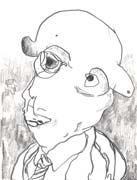 |
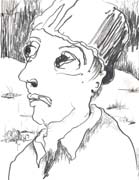 |
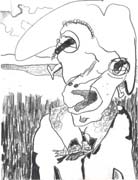 |
 |
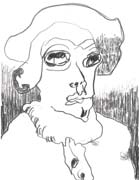 |
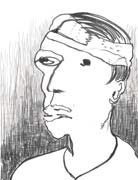 |
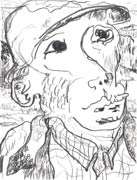 |
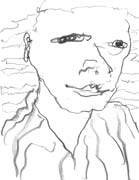 |
Last week, I was upstate doing some construction work. These are some of the drawings I made after the day’s labor.
Incidentally, the work site was in Sullivan County, New York, the home of Yasgur’s farm and the legendary Woodstock concert. For years, the location has been preserved as a sort of shrine to those three August days of 1969. It features a monument listing the performers, a big neon guitar sculpture and plays host to weekend farmer’s markets and arts and crafts festivals.
Last Summer, after much negotiation, the hallowed ground was broken for a performing arts center that, among other things, will serve as the summer home for the New York Philharmonic. From one longhair music to another.
Wednesday night, 60 Minutes aired an expose of 4 year old painting prodigy, Marla Olmstead's uncanny channeling of 1950's New York School painting styles. The focus of the program was whether or not young Marla actually is the painting genius her parents and gallerist claim or whether her canvases are the product of her father's hand, either in total or in collaboration.
The program enlists Ellen Winner, a psychologist who has studied gifted children and specializes in visual arts. Upon seeing a videotape of Marla at work, Winner said, "This is eye-opening to me to see her painting because she isn't doing anything that a normal kid wouldn't do. She's just kind of slowly pushing the paint around. I expected to see a child feverishly and intensively working at her canvas and filling up space.
Marla may not be a prodigy but she's still, like all children, a genius.
Whether or not she actually painted the works attributed to her, I have no idea. To me, the point of interest is that the parameters in which Marla paints are radically different from that of most four year olds:
First, she works on canvas, with apparently high quality paint that must be prepared for her. Second, she receives coaching in what one hopes is a playful exchange with Dad. Third, she is encouraged to work on the same image in multiple sessions and for protracted periods of time. One wonders what "non-prodigy" children could produce under similar circumstances.
A resolved work by a preschooler is quite the revelation. Prodigy or no, geniuses all.
 |
 |
 |
 |
 |
 |
 |
 |
 |
Seeing “The Gates” is experiential proof that our bureaucratic and political systems can be directed to bring forth delight. The choice is ours.
Christo said years ago at The School of the Art Institute of Chicago that he considers the political and bureaucratic navigation his projects require to be part of the art. I remember that he was especially interested in this aspect of the work: using his brief, inspired follies as a mechanism to place on display the Byzantine functioning of our civic structures. "The Gates" was first proposed to the City of New York in 1979.
As I walked through the park on the installation’s opening day, nearly 30 years later, the communal sense of possibility was palpable and a thrill to share with untold thousands.
What’s more, “The Gates” verifies the cost effectiveness of funding and pursuing delight. The project, which Christo and Jeanne-Claude financed privately, cost around $21 million. Mayor Bloomberg says the city expects the 16 day installation to yield an infusion of $80 million in tourism and other spending, according to the NYTimes. Zero investment with an $80 million return is serious art-as-urban-renewal.
In recent days, I’ve been queried often as to what I most like about it. My response: “That it exists.”
At one point while walking through “The Gates,” I came upon a pathway I’ve walked dozens, maybe even hundreds, of times. Striding beneath the billowing saffron banners, the walk along this gently sloping rise - as it curves around an outcropping of the very schist upon which New York bustles - was newly enchanting.
Christo’s installation removes familiarity from well worn experience allowing for fresh perception. Long after the gates have been removed and recycled, that gently sloping walkway will retain its added element of enchantment - an enchantment that comes from it existing at all.
Christo and Jeanne-Claude’s gift to us is a heightened appreciation for that which we already have.
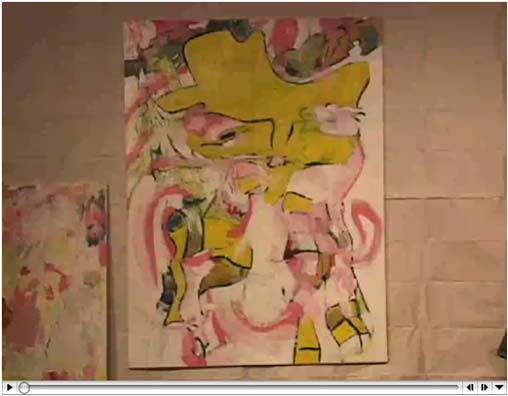
Picking up where we left off . . . click here for the second installment (DV mins. 1:07 - 2:04) of the canvas I'm currently working on.
To see the canvas go from :00 - 1:06 mins., click here. The Quicktime videos are 5.0 MB and 5.8 MB, respectively.
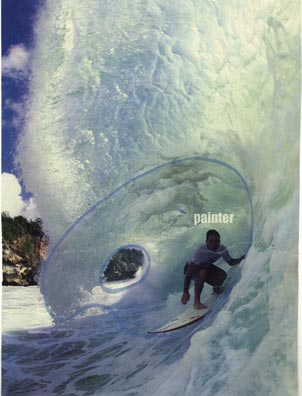
Surfing is an equal opportunity metaphor.
When the creative juices are stirring, the artist rides the wave full-on. The surfer in the Banzai Pipeline articulates the shape and structure of the wave, drawing an utterly unique line composed of the ride. Any painter with brush in hand attempts the same balancing act: lying in wait for the right moment, making a decisive plunge, moving in collaborative sympathy with the wave’s energy all while risking a nose dredging wipe out under foamy mystery.
Surfers plummet into the barrel, the hollow core and emerge exhilarated by an encounter with pure, charged creative force.
For the painter - for all of us, the surf is always up.
 |
 |
 |
 |
 |
 |
 |
 |
 |
This post concludes the Hawai’i Series. My thanks to those people who extended such humbling generosity, vision and hospitality. This place really is a paradise that I never dreamed would be part of my reality.